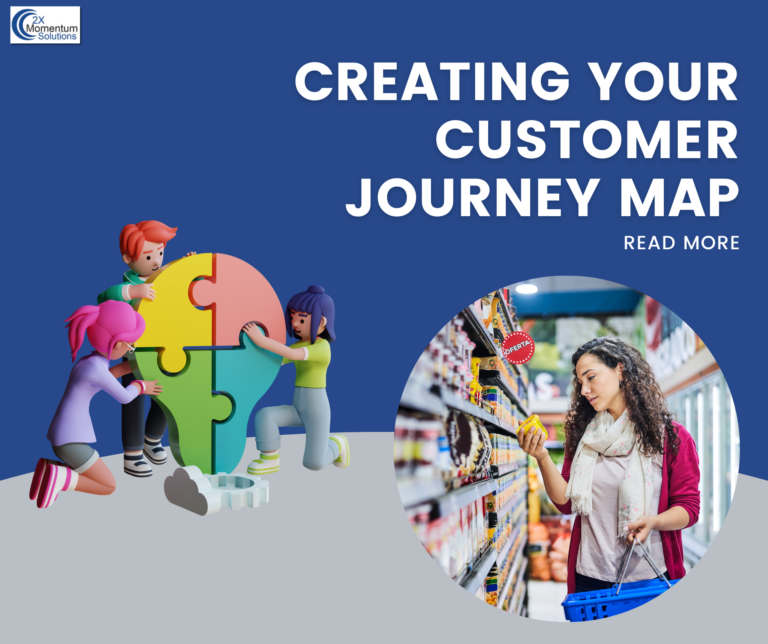These days, it’s rare for a single ad to drive a sale. Today’s customers want a connection with your brand, not just your product, and they typically need a number of positive interactions with a company before they’ll make one purchase. This is all part of the “customer journey,”—a customer’s overall experience with a brand from first contact to purchase.
Improving your customer journey is essential for increasing conversions. But you can’t improve your customer journey if you don’t fully understand it! That’s where a customer journey map comes in. Read on to learn what a customer journey map is, why it’s important, and how to create one.

What is a customer journey map?
A customer journey map is a visual representation of the customer journey. It includes “touchpoints” across all channels—any digital interactions like following your social media, reading a blogpost, clicking on an ad, or inquiring about a product. It also includes notes on your defined customer personas and their goals and feelings at each stage of the journey.
Why is a customer journey map important?
So much of the customer journey takes place digitally, so it’s essential to know exactly when, where, and how customers are interacting with your brand. Once you see what’s working and what’s not, you can figure out how to improve your customer journey and increase sales.
How to create a customer journey map:
Each company’s customer journey map will look a bit different, as it’s customized to your specific situation. Here’s the basic method for making a customer journey map!
Step 1: Define the buying process.
You likely already have stages set up for your online sales funnel; some commonly used stages are awareness, consideration, decision, and retention. This isn’t always a linear process; customers may go back and forth. Depending on their stage, customers will require different information and a different approach.
Step 2: Define your touchpoints.
Make a list of all the touchpoints a customer might have, across all channels. The touchpoints should form a logical progression. For example: a how-to article about a common problem (awareness stage) might lead someone to customer success stories (consideration stage), followed by a free demo (decision stage), and finally customer service support (retention).
Step 3: Listen to your customers.
Once you have your stages and touchpoints down, do a quick reality check! Has your customer journey been progressing as intended for most people? Review information from support calls or complaints to see where some potential sales might have gone off track. Create a plan to fix these issues before moving on.
Step 4: Finalize your map.
Take the information you’ve gathered and create your customer journey map! There’s no one right way to make it, so get creative if you want to. Just make sure it’s clear and accessible for all relevant team members, even those who don’t have all the background information. Your goal is to have a beautiful, straightforward representation of an effective customer journey!
Step 5: Optimize regularly.
Your customer journey can change as you launch new products, try new social media platforms, or modify your digital marketing strategy. Set a regular schedule to review and tweak your customer journey map, so that you can continue to improve your customer experience.
Get started today:
A customer journey map is an important tool for making sure you’re keeping your leads engaged with the right content and information at the right time.
If you’d like expert assistance setting up your map or improving your customer journey, 2XM is here to help. Contact us for a FREE 60 minute consultation today!
